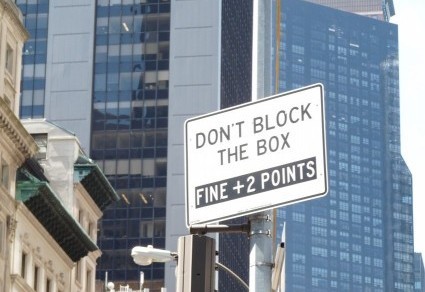Tell me where I should go when the streets are filled with motor vehicles and I see this sign:

I’m used to dodging texters, squadrons of cyclists, and an occasional Vespa on the sidewalk, but trucks? And will they hear me if I caution them for crossing sidewalk? Maybe I’ll just leave, as all packages referred to in this sign are directed to do:

At least I won’t be alone. In addition to packages, I’ll have doorman to protect me. Speaking of doorman, here’s a building notice that puzzles me:

I get that pofavor is short for por favor, part of a polite request in Spanish. But in front off bldg? Fortunately I don’t smoke, regardless of whether I’m on, off, or in front of a building. Or behind one, for that matter. I do drink wine. Maybe not the last one on this list, though:

I’m not keen to show ripe pear flavor on the nose, mine or anyone else’s. The mineral finish of the Riesling is more appealing, assuming the mineral isn’t something feldspar or mica, which I’ve never sampled but which I assume taste awful. And what’s a leading . . . finish? The middle wine looks like the best bet. Anyone care to join me off bldg for some Pinot Grigio? We can ignore the trucks crossing sidewalk and leave with doorman together, wine glasses in hand.










 As far as I’m concerned, BOGO all you want. I once thought that the concept of “buy one get one” was an unnecessary statement of the standard deal between buyer and seller. But now I see that most BOGO-users are too busy surfing social media to add an “F,” for “free.” Or maybe they think that BOGOF sounds like a mediocre brand of caviar. I commend this sign-writer for specifying the terms of the deal, spelling out “buy one get one” for “50% Off,” though strictly speaking the sign should read “BOGAOF50%O” (buy one get another one for 50% off). I concede that such a sign resembles the kind of password people concoct and promptly forget. I will, however, raise an objection to “tight.” I prefer to cover both legs with “tights,” not just one with a “FREE tight.” And $75 is a little steep, don’t you think?
As far as I’m concerned, BOGO all you want. I once thought that the concept of “buy one get one” was an unnecessary statement of the standard deal between buyer and seller. But now I see that most BOGO-users are too busy surfing social media to add an “F,” for “free.” Or maybe they think that BOGOF sounds like a mediocre brand of caviar. I commend this sign-writer for specifying the terms of the deal, spelling out “buy one get one” for “50% Off,” though strictly speaking the sign should read “BOGAOF50%O” (buy one get another one for 50% off). I concede that such a sign resembles the kind of password people concoct and promptly forget. I will, however, raise an objection to “tight.” I prefer to cover both legs with “tights,” not just one with a “FREE tight.” And $75 is a little steep, don’t you think?











 Somehow “ped” got a period, but “dept” didn’t. Both are abbreviations, “ped” being the shortened form for “pedestrian” and “dept” for “department.” In case you’re wondering (actually, despite the fact that you’re not wondering at all), I should mention that this NYC “dept” isn’t consistent when it comes to punctuation relating to walkers:
Somehow “ped” got a period, but “dept” didn’t. Both are abbreviations, “ped” being the shortened form for “pedestrian” and “dept” for “department.” In case you’re wondering (actually, despite the fact that you’re not wondering at all), I should mention that this NYC “dept” isn’t consistent when it comes to punctuation relating to walkers:

 I understand that consistency is difficult to achieve in, say, a 200-page document. But if you’re working with only two sentences, you ought to be able to spare a period for each or omit the punctuation mark entirely.
I understand that consistency is difficult to achieve in, say, a 200-page document. But if you’re working with only two sentences, you ought to be able to spare a period for each or omit the punctuation mark entirely. Okay, no period at the end of this sentence: I’m used to that. But I can’t find any reason for a comma before the conjunction “or.” For that matter, I can’t find a reason for the text as written. Why not just say “DO NOT FEED BIRDS”? Theories welcome. Punc also.
Okay, no period at the end of this sentence: I’m used to that. But I can’t find any reason for a comma before the conjunction “or.” For that matter, I can’t find a reason for the text as written. Why not just say “DO NOT FEED BIRDS”? Theories welcome. Punc also. I support the plea, the lavatory version of the Golden Rule, but not the pronoun. As the sentence is worded, “it” has to refer to “stalls and sinks.” Those items are clearly plural, and “it” is singular.
I support the plea, the lavatory version of the Golden Rule, but not the pronoun. As the sentence is worded, “it” has to refer to “stalls and sinks.” Those items are clearly plural, and “it” is singular.
